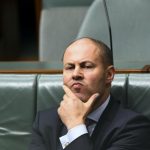Get onboard for Gonski
President of the NSW Teachers Federation, Maurie Mulheron, explains why the Gonski funding proposals are unfinished business and urges all political leaders to act now.
While the legislation to establish the funding framework has been passed, there is still much work to do before the money is secured. At the NSW state level, we have seen the Premier and Minister for Education trumpeting their $1.7 billion cuts to education as an example of fiscal responsibility, claiming, among other things, that the abolition of the curriculum directorate, the gutting of professional support, the elimination of teaching and support positions and the loss of equity programs will not have any impact on public schools.
But no amount of meaningless chatter about ‘new models’ or weasel words like ‘local decisions’ will distract the community from the State Government’s destructive educational policies.
Quite clearly, the NSW Government cuts to education seriously undermine any attempts to negotiate a bilateral agreement between the Federal and State Governments – essential if the Gonski model is to be implemented. One of the principles underscoring Gonski is that each sector must ‘maintain effort’. Quite rightly, the Federal Government never intended the additional funding designed to flow with the Gonski model to replace money ripped out by the State Government.
Not only does the State Government need to ‘maintain effort’, it also needs to find additional dollars to overcome the decades of neglect that have resulted in a wide disparity in achievement between the privileged and advantaged and those students in low socioeconomic and Indigenous communities. Gonski has the potential to reverse the neglect that is happening in too many of our schools, but all governments have to meet their obligations.
So many of the submissions to the Gonski review presented compelling evidence as to why we must act now. The submission from the Nous Group indicated that Australia has one of the most segregated education systems in the world.
About one third of Australian students are enrolled in schools where the average socio-economic status (SES) of the students is below the average SES of the nation. There are only one third of students enrolled in schools with an average or mixed SES. Almost 60 per cent of the most disadvantaged students are concentrated in schools with disadvantaged socio-economic status.
Again, this is well above the OECD average, and substantially higher than in any comparable OECD country. These figures damn any politician who refuses to support the Gonski reforms.
The teachers in our public schools know what these statistics mean each and every day of their working lives. Our public schools teach 80 per cent of students in the lowest quartile of socio-economic disadvantage; 85 per cent of Indigenous students; 78 per cent of students with a funded disability; 83 per cent of students in remote/very remote areas; and the majority of students with English language difficulties, including over 90 per cent of students in the ESL New Arrivals Program.
While teachers and principals grapple with the enormous workload – challenges and responsibilities that can never be really reflected in statistics – governments deliberately attempt to distract the profession and the community with managerial changes such as devolved ‘decision-making’.
So, if poverty and lack of resources is the question that all educators can agree on, what then is the answer?
On February 7, a group of prominent Australians including eight ex-Premiers, a former Governor-General, a Nobel Prize recipient, Indigenous leaders, academics, lawyers, sports stars, and representatives from unions and welfare and ethnic groups, published an open letter calling on all political leaders to embrace the Gonski funding model as an act of urgency.
“[The Gonski] recommendations provide a once in a generation opportunity to change the way we resource our schools and educate our children. We ignore it at our peril.”
The letter was published in the major daily newspapers and signalled the next phase of the Gonski campaign. The calling of the Federal election has given it an even greater sense of urgency.
In a Federal election year, all supporters of public education should remind the community that any politician that threatens funding to public schools, and in particular the Gonski reforms, does not deserve to be elected.
Maurie Mulheron is the President of the NSW Teachers Federation. He has been a teacher in NSW public schools for over 30 years. For the ten years before to becoming President in 2012 he was a secondary school principal in the Wollongong area of NSW.
Maurie Mulheron is the President of the NSW Teachers Federation. He has been a teacher in NSW public schools for over 30 years. For the ten years before to becoming President in 2012 he was a secondary school principal in the Wollongong area of NSW.











